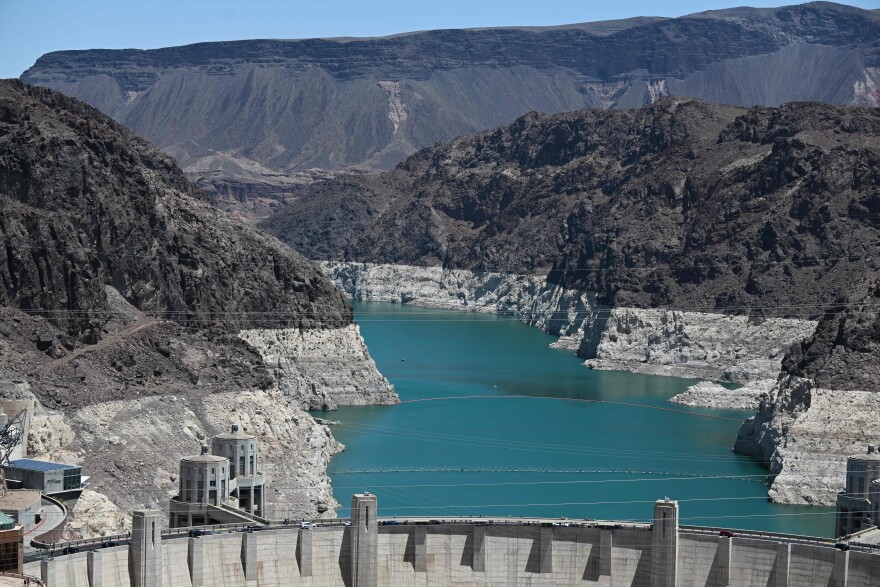Truth matters. Community matters. Your support makes both possible. LAist is one of the few places where news remains independent and free from political and corporate influence. Stand up for truth and for LAist. Make your year-end tax-deductible gift now.
CA Rejected A Colorado River Water Use Plan And Now Has Its Own. But The Issue Is Far From Settled

The seven states that draw from the Colorado River missed another deadline from the federal government to come up with an agreement to cut total water use by 2 to 4 million acre-feet.
Late Tuesday, California released its own plan after not signing on to a proposal agreed upon by six states to cut about 2 million acre-feet. Both plans agree we need to cut down a lot more on water use, but who shoulders the biggest cuts remains a question.
The Colorado River provides water to more than 40 million people and hundreds of thousands of acres of farmland in Wyoming, Colorado, New Mexico, Utah, Arizona, Nevada and California, plus two Mexican states (Baja California and Sonora).
California gets the most water from the river of any state, and the river’s main reservoirs — Lake Powell and Lake Mead — are two of our biggest water sources in the Southland (Lake Powell is also a major source of clean hydroelectric power). The river has long been overused — and the climate crisis is pushing a reckoning with a century-old water rights law that many say is outdated in our hotter and drier reality.
Complicated Legal Rights
Last year, the federal government told the seven U.S. states that rely on the Colorado River to come up with a voluntary plan to cut total water use by 2 to 4 million acre-feet — or face federal mandates. For context, California is legally entitled to 4.4 million acre-feet of water from the river every year.
Most of the legal rights to that water are held by farmers in the arid Imperial Valley. The next biggest bucket goes to the Metropolitan Water District of Southern California, which serves 19 million people in cities across the Southland.
Lack of snowpack in the Sierra Nevadas and the crisis on the Colorado led to millions of people in Southland cities being put under outdoor watering restrictions. In Los Angeles, you can only water twice a week, though watering food gardens and trees by hand is allowed whenever needed.
The crisis on the Colorado River could eventually bring more restrictions.
Two Proposals
After missing an initial deadline last August, on Tuesday six of the seven states released a proposal to cut water use by about 1.5 million acre-feet per year — calling on California to shoulder the biggest cuts.
California didn’t sign on, citing its senior water rights (the current rules say California is last to lose its water amid a shortage). In response, state officials released another plan that leaves the bulk of water cuts over the next few years to Arizona and Nevada (which have both faced unprecedented cuts to their usual shares over the last two years). California would curb its own water use 9% through 2026, when the current water shortage rules expire.
Both plans would lead to 2 to 3 million acre-feet of water cuts in 2024, but big disagreements remain on how to achieve those cuts.
That lack of consensus could spur federal mandates and lawsuits from the states, which could delay solutions. The current rules expire in 2026. By then, the states and federal government will need a more permanent plan for Colorado River water use.
A final decision on the plan until then is expected by summer.








